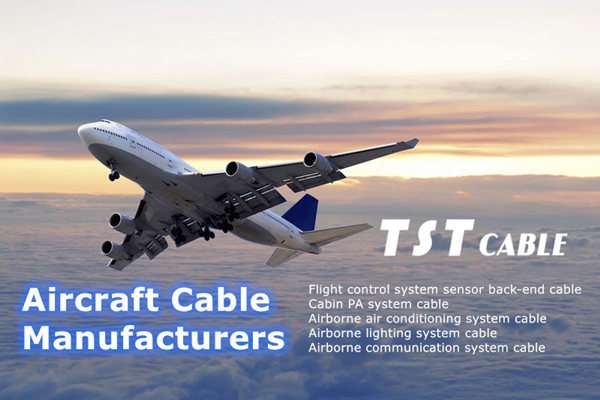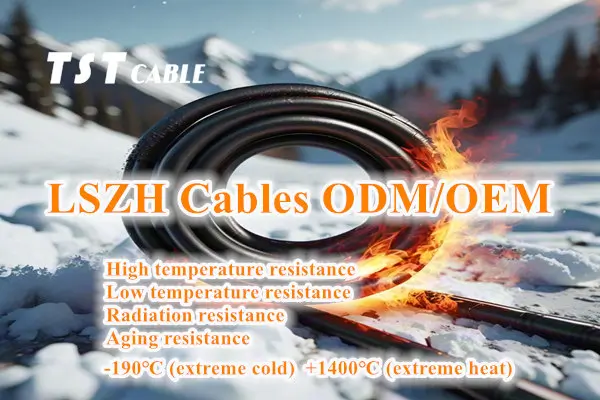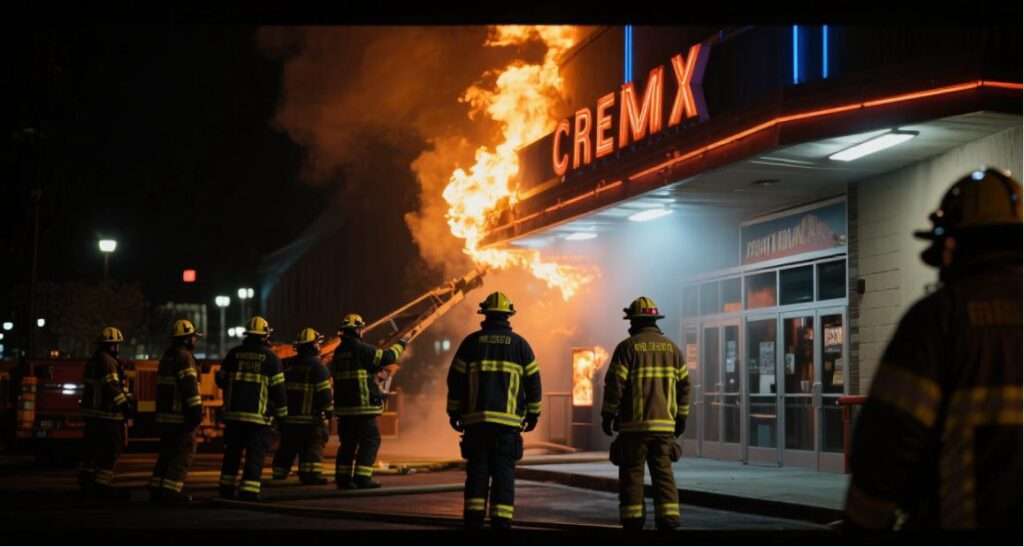
When buying cables, many people’s first instinct is to choose the cheaper option. TST CABLE did the math, and many were surprised!
As a result, ordinary PVC cables have become a hot commodity, priced 20%-40% cheaper than low-smoke zero-halogen (LSZH) cables. But you might not know—cheaper cables can actually be more expensive in the long run. To truly save money, consider the “whole life cycle cost,” not just the purchase price.
1. Initial Cost: Ordinary Cable Wins, but Not by a Lot
First, let’s get real:
Ordinary PVC cables: Inexpensive materials, mature manufacturing processes, and low unit prices make them suitable for projects with tight budgets.
Low-Smoke Zero-Halogen cables: Made with environmentally friendly flame-retardant materials (such as halogen-free cross-linked polyolefins), low-cost cables require a more complex production process and are 20%-50% more expensive.
For example:
For a 50 million yuan commercial project, the total cable procurement cost is approximately 1.5 million yuan.
If all TST CABLE low-smoke zero-halogen cables were used, the initial cost would be an additional 300,000-500,000 yuan.
Sounds like a lot? Yet, this represents less than 1% of the total investment, yet it brings with it an inherent safety upgrade.
II. Hidden Costs: Ordinary Cables Are the Long-Term Assassin
The true cost burden lies hidden:
| Cost items | Ordinary cables | TST CABLE low-smoke, halogen-free cables |
| Maintenance costs | Susceptible to aging and cracking in high-temperature and humid environments, requiring frequent replacement | Heat-resistant and corrosion-resistant, with a service life of up to 25 years and virtually maintenance-free |
| breakdown losses | High risk of short circuits and electrical leakage, requiring frequent repairs | Stable insulation and low failure rate |
| fire losses | Combustion releases toxic fumes, potentially causing casualties and equipment corrosion | Low-smoke, non-toxic, self-extinguishing, flame-retardant, reducing the spread of accidents |
| downtime losses | One hour of factory or data center downtime can result in tens of thousands of yuan in losses | Safe and stable, reducing unplanned downtime |
| And insurance costs | High fire risk, resulting in higher insurance premiums | Low risk rating, eligible for preferential insurance premiums |
Case: A data center suffered a server fire caused by ordinary cables, resulting in over 8 million yuan in direct losses, three days of downtime, and tens of millions in indirect losses.
Comparable projects using TST CABLE LSZH cables have experienced zero fire incidents in 10 years.
III. Policy and Acceptance: Cheap Doesn’t Mean Effective
Increasingly, projects are mandating the use of low-smoke, zero-halogen cables:
Subways, hospitals, schools, high-rise buildings, data centers, and more all require LSZH cables for fire safety inspections.
Don’t use them? Failure to pass inspection prevents commissioning, and all initial investment is wasted.
Not to mention large state-owned enterprises and foreign-funded projects, where bidding documents explicitly state: “A low-smoke, zero-halogen test report must be provided.”
IV. Residual Value and Environmental Protection: LSZH Cables are More “Respectable”
Scrap and Disposal: Burning ordinary cables produces toxic waste, resulting in high disposal costs; LSZH cables are recyclable and environmentally compliant.
Corporate Image: Using environmentally friendly materials is a plus in green building certifications (such as LEED) and ESG ratings.
5. Real-World Comparison: 10% More Expensive, But Saved Millions
Comparison of a Coastal Office Building Project:
Initially, an additional 420,000 yuan was invested in LSZH cables;
But within 10 years:
Maintenance costs were reduced by approximately 600,000 yuan;
Two electrical fires were avoided, saving over 3 million yuan in losses;
Successfully passed fire safety inspection and was delivered ahead of schedule.
Conclusion: The investment payback period was less than a year, and thereafter, it was a net saving.
It’s not about the cost, it’s about the investment security.
| Comparison Items | Standard Cable | Low-smoke, halogen-free cable |
| Purchase Price | ✅ Cheap | ❌ Slightly more expensive |
| Safety | ❌ Poor (Toxic Fumes) | ✅ Strong (low smoke, non-toxic) |
| Service Life | ⚠️ 10-15 Years | ✅ 20-25 years |
| Comprehensive Cost | ❌ High (High Hidden Costs) | ✅ Low (long-term savings) |
| Applicable Scenarios | Temporary Construction, Low-Risk Areas | Suitable for public places, crowded areas, and critical facilities |
Ordinary cables save money temporarily, while low-smoke, halogen-free cables save you peace of mind forever.
When it comes to safety, there’s no such thing as “almost.”
Choosing the right cable doesn’t increase costs; it prevents further losses.
After all, there are some costs you simply can’t afford.
Also available in:
English





